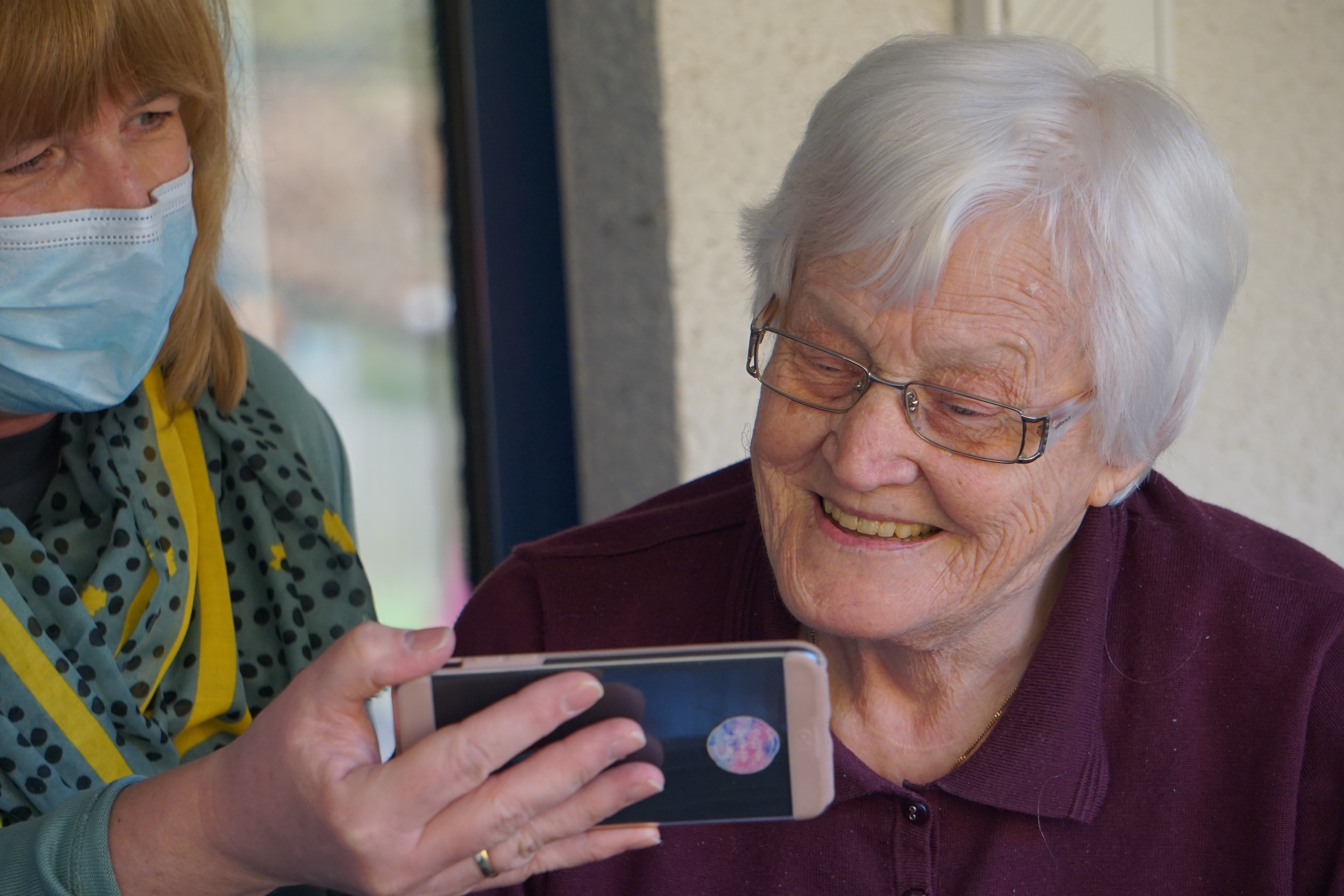
5 Ways to Support Patients with Failing Eyesight
November 17 2020
How to Offer Help that Allows a Patient to Maintain Their Independence
For a person who was able to see well previously, losing their eyesight is life altering. It can be difficult to adjust to life with failing eyesight and can even be wrought with depression and anger. As a caregiver, it is important to support them in a multitude of ways. From allowing them to express their emotions over losing their eyesight to aiding them in continuing to live more independently, here are our top 5 ways you can support patients with failing eyesight.
Make it Well Lit
1 One of the best ways to help those with low vision is to make sure their home is well lit. Brighter lights can help those with low vision see better without straining. Change out bulbs to high-wattage bulbs or LED lights that will light up rooms better. Add additional lamps or task lights where needed. Some areas of the home that are important to be well lit include the kitchen, bathroom and any other work areas.
Remove Clutter + Make it Safe
2 Clutter can not only make it hard for those with failing eyesight to find what they need, but it can also pose a fall risk. Help them remove clutter and organize the home, keeping walkways free and clear. Organize important items like documents and pantry items. Make sure that you don’t move anything, whether in general or during organizing, without the patient knowing where something is being relocated to. Amp up the safety factor by marking stairs or slopes with brightly colored tape that is in high contrast to the flooring. This will ensure that a person with low vision will see the marker.
Verbal Cues
3 It is important to give verbal cues to those with failing eyesight. We already mentioned telling your patient when you relocate something, but also be sure to let a person with low vision know when you have entered a room. Also, don’t walk away without telling them that you are leaving. In dangerous situations, say “stop” rather than “look out.” Using a one word command that literally stops people in their tracks is much more effective in preventing accidents. If there is time ahead to warn your patient of obstacles, describe the surroundings and the obstacle in their pathway. Don’t forget to warn them of overhangs or things jutting out such as kitchen cupboards or side mirrors on cars. Also, use descriptive language to describe where something is; don’t point and say “over there.” Also, don’t speak loudly. Just because your patient has low vision, doesn’t mean they can’t hear well.
Physical Support
4 Remember to ask first if the patient needs your help rather than just jumping in. Allow your patient with low vision to take your arm while walking, especially in unfamiliar surroundings. When they want help being seated, simply guide their hand to the back of the chair and they will then be able to seat themselves. If a person is new to losing their eyesight, they may need additional guidance and help until they feel more confident to do things on their own.
Other Adjustments and Tips
5 Reading text can become very difficult. Suggest the use of vision aides, such as task lamps and magnifying glasses to help them. For important information, such as family phone numbers, write them down in big, bold and clear print.
Other adjustments and tips include:
- Changing TV settings so the picture is brighter
- Changing computers and mobile device accessibility settings to make text larger and higher contrast
- Changing out phones to those with larger buttons
- Providing or suggesting other low vision aids such as a walking stick or magnifiers
- Don’t leave doors ajar, instead fully close or open them
- Address your patient by name so they know you are speaking to them and address them rather than a family member or companion
- Do not fill glasses or cups to the brim
- It’s okay to use words like “look” and “see” because they are part of everyone’s vocabulary, however, do know if your patient is sensitive to words such as this (remember, everyone is different!)
- If they are new to losing their vision, allow them to express their emotions and vent frustrations, this is an important part of dealing with any new change in a person’s health
Conclusion
For those who were previously able to see, adjusting to low vision can be hard. But with your support, your patients will be able to retain as much independence as possible. Overall, just remember to show compassion, offer help and watch out for dangerous situations that can cause injury.





